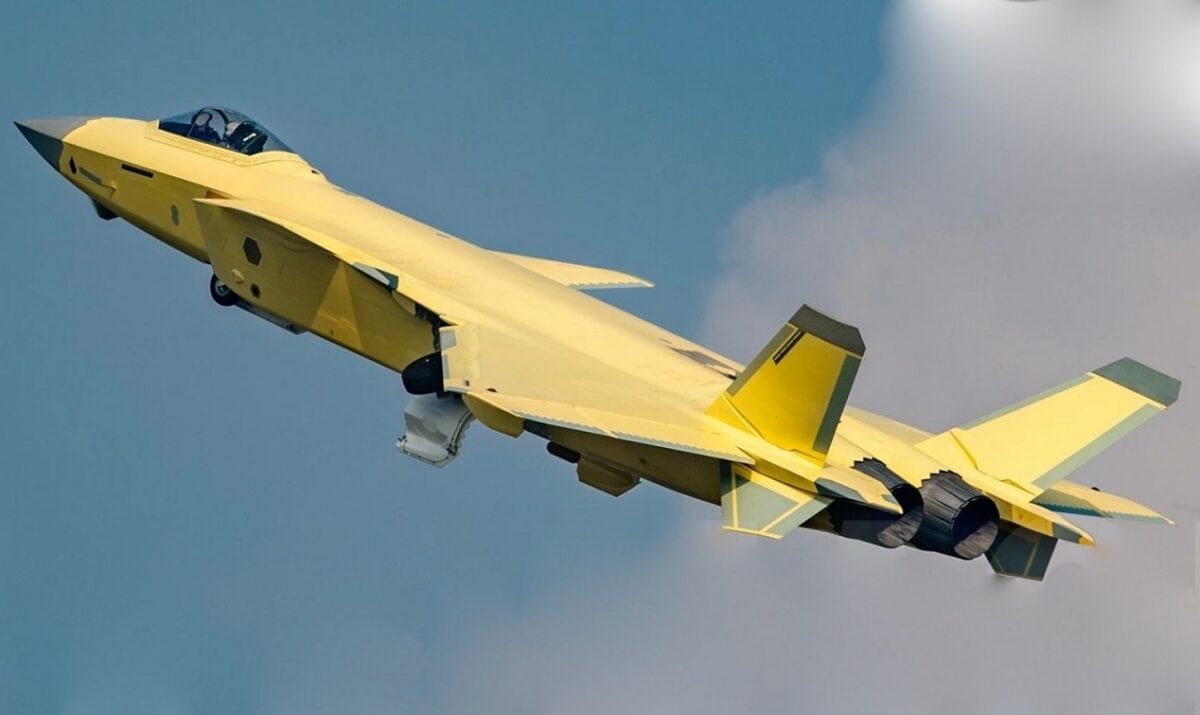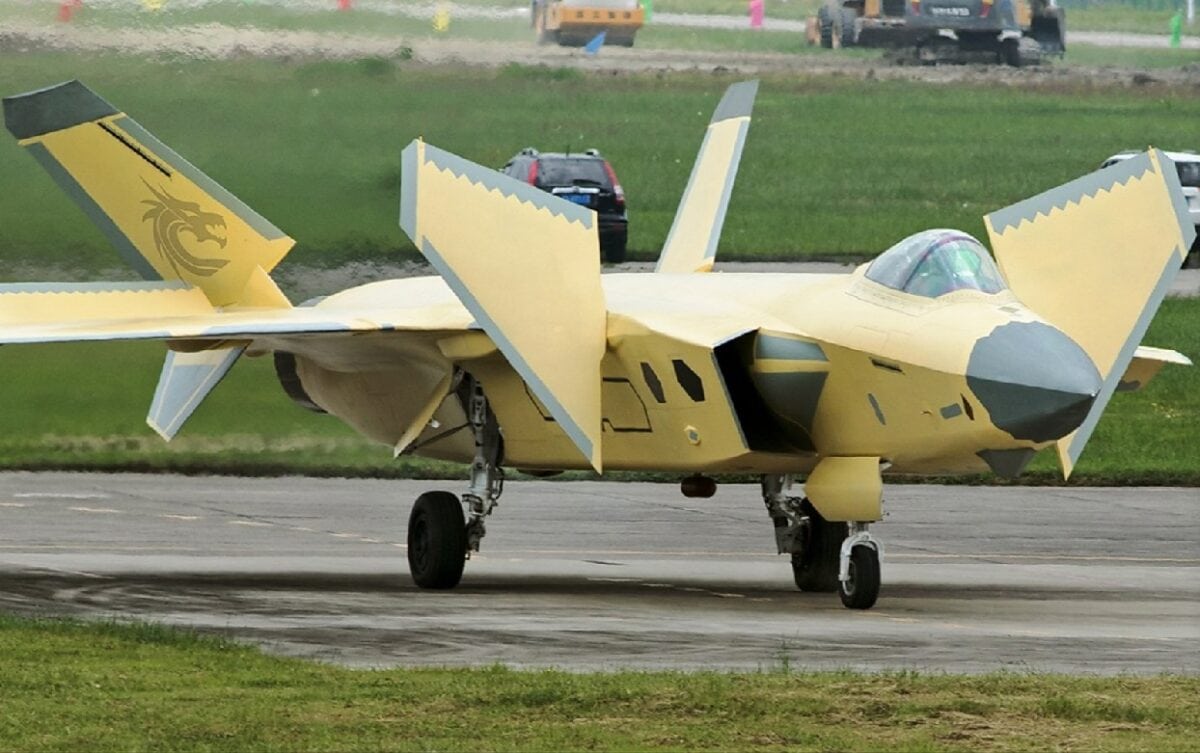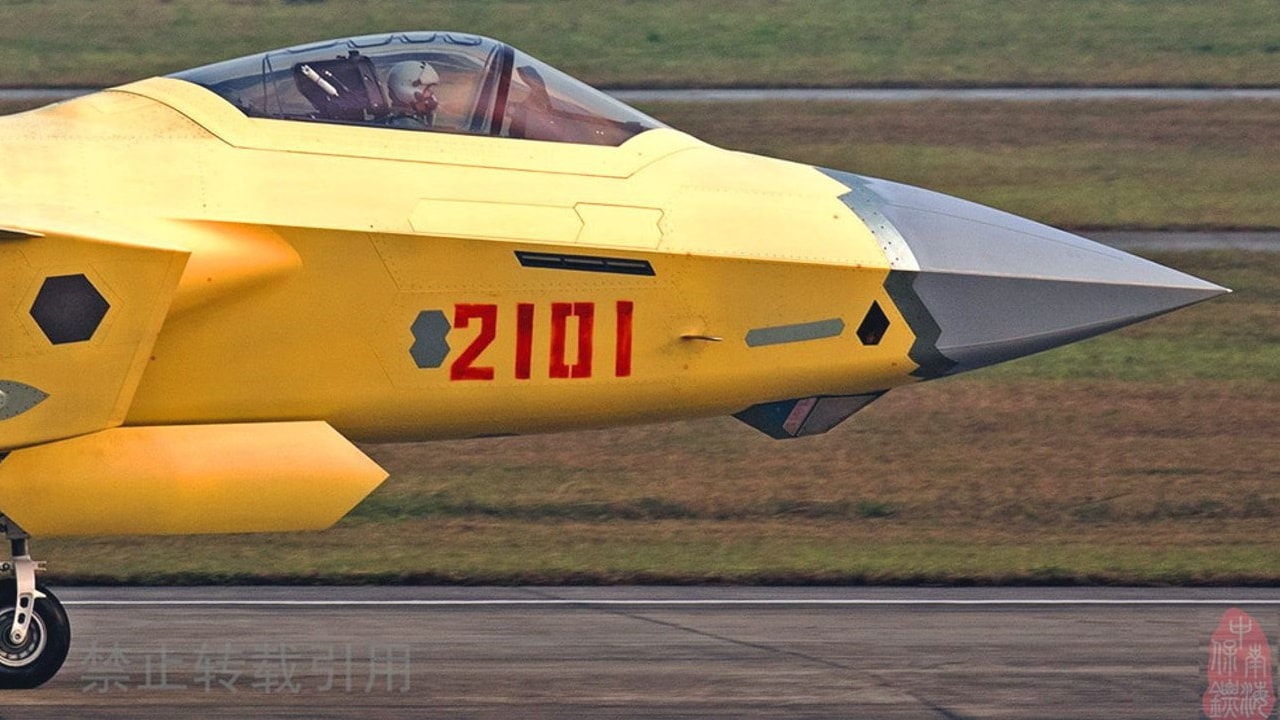A Comprehensive Look at China’s Next Generation J-20 Fighter, by Expert Dr. Brent M. Eastwood: Outright Chinese theft of intellectual property, design, engineering, and technology is evident in Chinese fighters over the years.
One can see this in the current J-20 fifth-generation fighter that looks like it took designs from at least four different fighter programs.
The following description is a complex back story for the airplane, so bear with me.
The J-20 is an outgrowth of the J-10 which borrowed technology from the Israelis. The J-20 is also based on the J-11 and the J-16 – both from a Soviet Su-27 design. The J-15, the naval fighter which the J-20 borrows from, is also a product of a Russian warplane — the Su-33.
Finally, the J-20 resembles the American F-35 and F-22.
Confused yet?
The J-20 is one complicated warbird. Let’s take a closer look and hopefully things will become clearer.
China Is Not Afraid to Spend Money on the J-20
The J-20 Mighty Dragon is China’s most technologically advanced fighter plane.
It is the world’s third fighter with stealth characteristics after the F-22 and F-35.
China has spent over $4.4 billion on its development over the years. Each fighter costs about $120 million.
The J-20 made its first appearance in 2016 at a Chinese air show and was introduced to the People’s Liberation Army Air Force (PLAAF) in 2017. But some date the J-20 back to 2011 when online images first appeared in blogs. The airplane grew from the J-XX program in the 1990s.
How Many J-20s Are There?
The PLAAF may have as many as 150 J-20s already in service. The Chinese are building one J-20 each month.
The fighter is making regular patrols over the Taiwan Strait and the East and South China Seas. The J-20 often flies into Taiwan’s air defense identification zone and would be difficult for existing Taiwanese air defenses and fighter planes to stop.
However, Taiwan does have the fourth generation improved F-16V Viper to go up against the J-20. The F-16V is thought to have longer range and a better radar system, but it is not stealthy. It is smaller than the J-20 and maybe a bit more maneuverable.
The Specs Are Strong
The J-20 is believed to be fast–approaching speeds of up to MACH 2. It has a ceiling of 60,000 feet and a range of around 700 miles. China’s fighter jet has PL-12C/D and PL-21 air-to-air missiles and PL-10 short-range air-to-air missiles.
The fighter has a high thrust/weight ratio, good speed, excellent maneuverability, and the range needed to dominate its immediate neighborhood. In addition to threatening Taiwan, the J-20 can also enforce China’s claims over various islands, rocks, and reefs that Beijing thinks are it’s own.
China Steals to Its Heart’s Content
Chinese cyber hackers are believed to have stolen plans from the F-35 program.
The thieves took details from an Australian subcontractor, and they were off and running. Asia Times said, “The sensor system on the J-20, which is visible on the fuselage in some high-resolution photos handed out by the Chinese military, looks ‘awfully similar’ to the Lockheed Martin Electro-Optical Targeting System on the front of the F-35.”
Weapons Systems Officer Will Help in Combat
The PLAAF may eventually add a back seat for a weapons systems officer if it hasn’t already. This will help the pilot concentrate on maneuvering the airplane and make its munitions more lethal. The J-20 is expected to have robust electronic warfare and jamming capability to enhance its radar evasion for better survivability.

J-20 Stealth Fighter. Image Credit: Creative Commons.
U.S. Allies Are Stocking Up On F-35s
It will likely be able to fire anti-ship missiles and other strike munitions to challenge the U.S. Navy and Taiwan’s navy. South Korea and Japan will also have to worry about the J-20. South Korea, as a result of the development of the J-20, is buying more F-35s. Japan is a huge customer of the F-35. The Japanese self-defense force owns over 100 Lightning IIs.
Watch Out for J-20 Beast Mode
The J-20 may also be able to fly in “beast mode” and attach even more munitions to its wings to include air-to-surface models for ground strike. This would make the fighter a multi-role warbird as well as achieve air dominance in contested skies.
F-35 Versus the J-20
The F-35 also has better stealth attributes and may be able to fire at a J-20 before the Chinese pilot sees it. The F-35 has a superior engine and there are even efforts to improve it to answer China’s air force.
The F-35 and J-20 standoff, since both fighters have some similar features, would then come down to the skill of pilots. China has not fought a war since 1979 when its army invaded Vietnam in a conflict that lasted less than a month. American pilots have flown for years over the Middle East and South Asia, although those missions were usually for air support and not flights in contested air space. American pilots would likely have the advantage in a head-to-head matchup.

Can Taiwan’s Air Force Survive in An Aerial Attack from China?
Chinese pilots have never deployed their weapons in anger, although they practice repeatedly near Taiwan’s air space. Determined Taiwanese pilots, flying the F-16V, could buy time for its air force and attrit Chinese fighters until the United States or other allies intervene with reinforcements. Taiwan’s air force would likely have to survive for at least two weeks for this to happen. It would be a tough fight as China enjoys a two-to-one advantage in terms of the number of fighters across all models.
China has clearly stolen and borrowed technology and designs for its J-20 Mighty Dragon. But that is in the rearview mirror. It is time for China’s adversaries – the United States, Taiwan, South Korea, and Japan – to focus on dogfighting skills while flying their F-35s and F-16Vs. This will come down to the daring exploits of individual fighter pilots. The era of the J-20 has arrived, and it will take an F-16V or F-35 to stop it.
Expert Biography: Serving as 1945’s Defense and National Security Editor, Dr. Brent M. Eastwood is the author of Humans, Machines, and Data: Future Trends in Warfare. He is an Emerging Threats expert and former U.S. Army Infantry officer. You can follow him on Twitter @BMEastwood. He holds a Ph.D. in Political Science and Foreign Policy.

